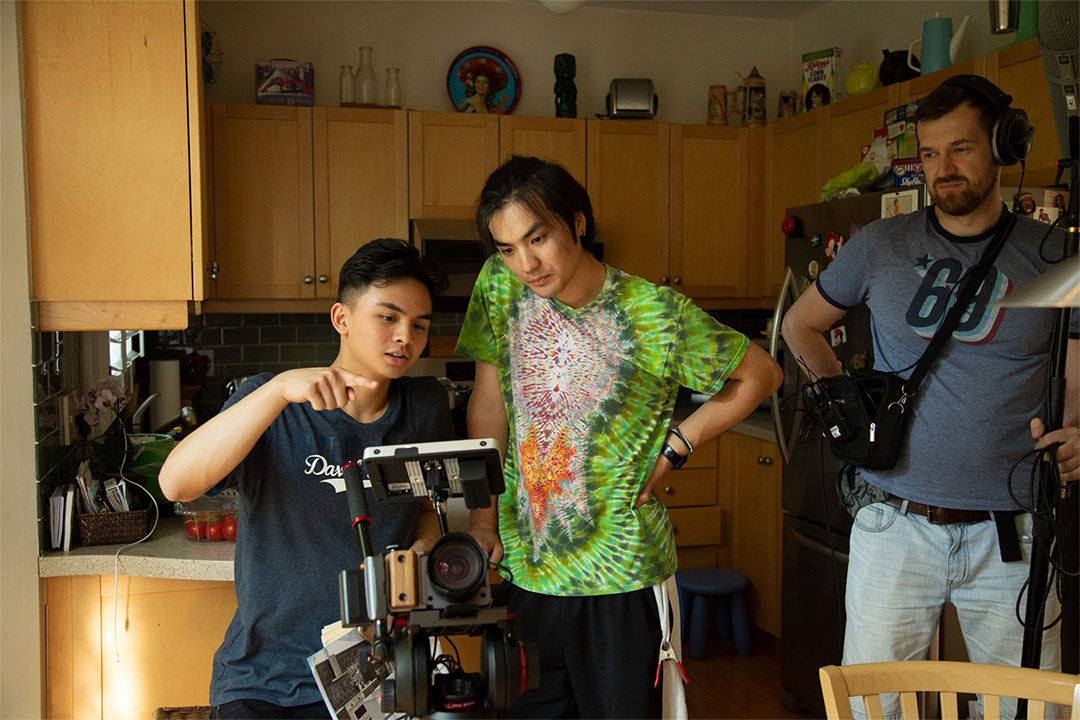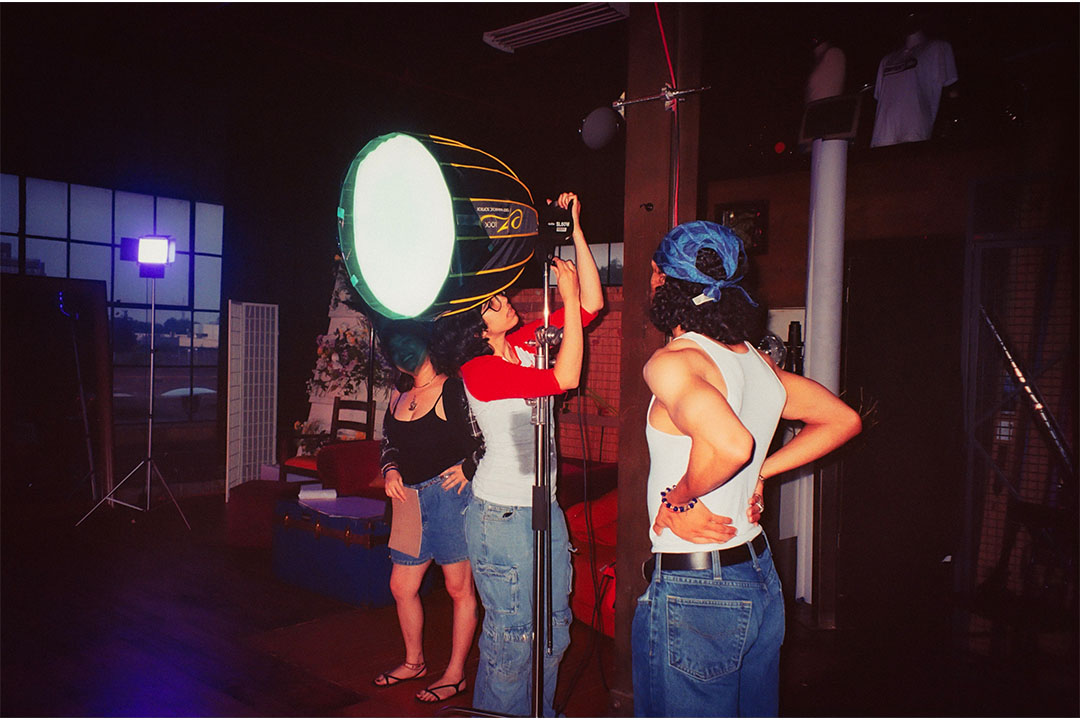All it takes to produce a film is a handful of acquaintances, some cheaply rented cameras, a healthy supply of networking skills, and some cash scraped together from odd jobs.
At least, that’s what has been true for Mokshali Raman, a third-year English and classics major. The inspiration for Raman’s multi-part short film project Slant Rhyme came to her from the poetry portfolio she had created during a series of creative writing courses. “I wanted to make a movie. And I was like, what better time to do these things than in the summer?” she said in an interview with The Varsity.
Then came the matters of cast and crew, equipment, location, and set design. Without a filmmaking portfolio or initial grant funding, Raman had to depend on her people skills. She put out a call for camera operators, actors, and dancers on her Instagram story. She walked into a Jimmy’s Coffee and asked the manager for permission to film a scene there — which they granted, in exchange for Raman taking some pictures for the coffee shop’s social media.
She then rented her camera equipment from the Hart House Film Board (HHFB), an organization run out of Hart House that offers low-cost equipment rentals and filmmaking classes, hosts screening parties, and puts on filmmaking competitions. Compared to private equipment rental services, Raman noted that the HHFB’s rates are drastically cheaper. “Of course, [selection is] slightly more limited. But you don’t really need that much equipment to film something. You just need good lighting. And, honestly, just your phone,” she added.
Favours for friends
The HHFB has also rented out equipment to Kennedy Kao, a former U of T student whose short film Danica’s Mom won the grand prize at the Montreal Festival du Nouveau Cinéma in 2020. Kao has been working on independent film projects ever since and is now a co-technical director of the HHFB.
But Kao got his start in a now-disbanded U of T club of aspiring filmmakers who called themselves Rain Dance on Campus. One of the people Kao met in the club would eventually become his close friend and served as director of photography for Danica’s Mom. Kao was also able to use his friend’s connections with other film students to recruit even more crew members.

In an interview with The Varsity, Kao recalled that his budget for the film was around $4,000; the money came “pretty much from my own bank account,” he said. “I had a very regimented lifestyle. So I would just go to school, I would work, and I would save up money just to make films.”
However, the lean budget was not enough to pay everyone on the team, Kao explained. Friends on the crew, like Kao’s director of photography, agreed to work on the film partially as a favour to a close friend. “Crew members were also looking to get experience because they were just starting out in filmmaking,” Kao noted.
Networking
Getting to know fellow hopefuls in the industry is crucial, Raman emphasized. Like Kao, providing people the opportunity to gain experience and portfolio items drew fellow students and other acquaintances to her project.
“Lots of people want to be influencers or bloggers. And while they can get aesthetic shots, they don’t have access to as much cool equipment,” Raman explained.
But finding those people meant seeking out events around Toronto where people interested in film production are likely to be found. Raman pointed to her volunteering work at Fashion Art Toronto, conferences and lectures on filmmaking promoted by the Toronto Film School’s newsletter, and small concerts as ways to meet people.
For Raman, building those connections also helped her to find clients for odd jobs in photography and film. For instance, she recently filmed a concert for an emerging musician, which then helped her finance her own projects.
Even bumping into people in cafes and on the sidewalk can be an opportunity to make a connection, Raman said. “People will stop and be like, where did you get that dress from? Then you talk to them for five minutes and you’re like, ‘Oh, so you’re a musician’… all of those contacts are really useful.”
Grant funding
Further down the line, Kao explained that funding from a couple of grant organizations has allowed his filmmaking projects to grow. Danica’s Mom went on to win the Best Student Prize at the Montreal Festival du Nouveau Cinéma, which got Kao a $2,000 cash prize from Netflix.
“I was able to [use it] for my next short film and then kind of get the ball rolling from there,” Kao explained.
Now, Kao has secured around $17,000 in grant funding for his current project, Good Boy — “quite a jump from $4,000,” as he noted. But working with grant money also means tightening the production’s accounting, Kao explained.
“Grant organizations are looking for [more] organization, because you have to submit your film and your production plan to them after you finish the production… whereas before I would sort of just handle the finances on my own and not write anything down or organize things properly,” Kao said.
But the higher budget also means that Kao is able to pay more of the team working with him on the film, even if they are close friends.
As for Raman, she is actively working on the later segments of her film project. She’s currently set to screen the first part at a youth centre in Scarborough.



No comments to display.